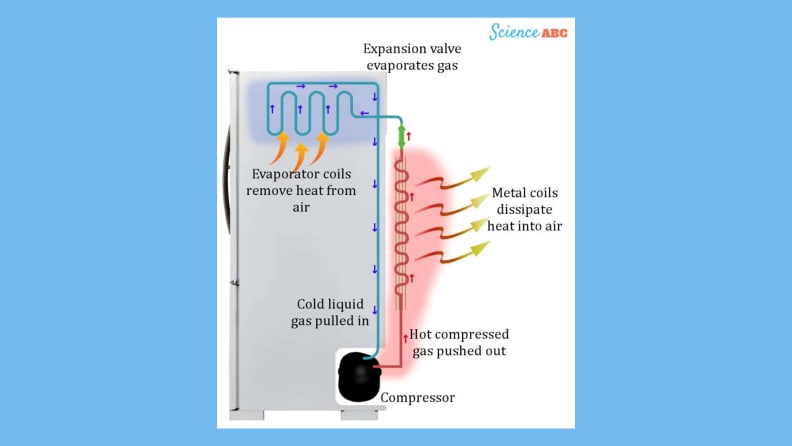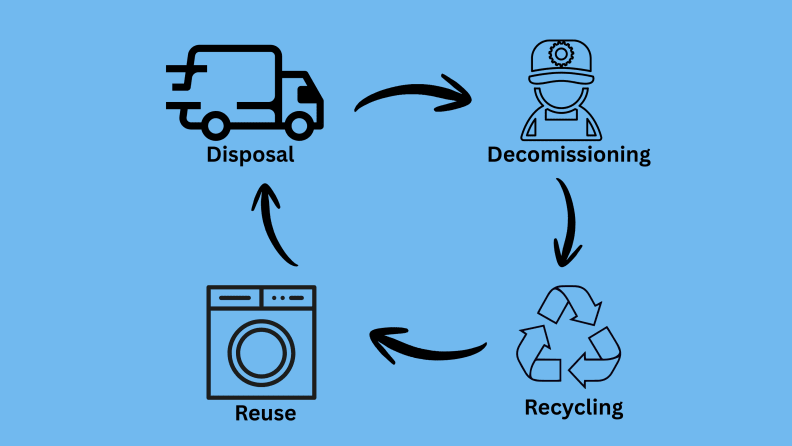Where do old appliances go when they die?
Yes, you can (and should) recycle old appliances
 Credit:
Reviewed / Canva AI
Credit:
Reviewed / Canva AI
Products are chosen independently by our editors. Purchases made through our links may earn us a commission.
After many years of faithful service, your fridge has dispensed its last ice cube, and your washer has spun its last spin cycle. So what now? Where do old appliances go when they’re hauled away, and why should you care?
It’s easy to think, “out of sight, out of mind,” but used appliances actually enter a complex waste stream that determines how much is reused, recycled, or sent to landfills. Apply this to the estimated 13 million refrigerated appliances discarded annually (which doesn’t even include washers, dryers, and dishwashers), and that’s more than 5 million tons of waste per year.
That amount of waste is not only damaging to the environment, but we’re also running out of room to pile it up here on Earth.
However, you can help by paying attention to where your old appliances go when you’re done with them.
Life after the life of your appliances
Step 1: Collection—when it’s time for your appliance to leave home
The majority of new appliance purchases are made to replace a dead appliance. In those cases, it’s relatively easy to responsibly dispose of your old appliance when your new one is delivered.
You have several options for appliance disposal, including:
- Selling the unit if it is still in working condition or easily repairable (although be aware of the energy consumption costs of older appliances)
- Scheduling haul-away service along with the delivery of your new appliance
- Donating it to a reputable organization that accepts large appliances
Step 2: Decommissioning—removing the dangerous stuff

Refrigerant runs through the sealed system of refrigerators to keep them cool, and must be properly disposed of to prevent environmental damage.
Responsibly disposing of refrigerators, A/C units, and heat pumps is crucial because the refrigerant running through them can have potentially damaging environmental impacts.
During disposal, there are laws governing the retrieval and disposal of refrigerant, which is why it’s important to ensure you send your old appliance to a certified recovery facility. Most major retailers, such as The Home Depot and Lowe’s, offer haul-away services and have documented appliance recycling programs that include certified removal and disposal of hazardous materials, such as refrigerants.
Step 3: Recycling—mining the metals

The Responsible Appliance Disposal (RAD) program is a partnership between the EPA and companies to ensure proper decommissioning and recycling of large appliances.
As part of its Green Initiatives, online appliance retailer, Abt, has its own recycling center with impressive industrial recycling machinery. Everything from the cardboard and Styrofoam removed from an appliance delivery to the metal of an old washing machine is handled there.
Abt says that in one year, it “saved 4.6 million pounds of cardboard and paper from going to the local dump, over 600,000 pounds of Styrofoam from going to the landfill, and over 22 million pounds of appliances” from other waste streams.
There is a robust stream of metal recycling from companies such as Radius Recycling, which recycles used metals for new uses worldwide. All certified appliance haul-away services should be able to provide documentation about how they recycle old appliances, so check before you let them drive away.
Lastly, many manufacturers and retailers participate in the EPA Responsible Appliance Disposal (RAD) program, which sets forth guidelines for decommissioning and recycling of large appliances—especially those containing refrigerant.
Step 4: The appliance afterlife—where the parts go and why it matters
Ideally, recovered metals reenter the supply chain, possibly in new appliances. When done right, appliance recycling reduces emissions, reuses valuable metals, and prevents toxic leaks. When done incorrectly, it releases refrigerants, heavy metals, and microplastics into the environment.
If your goal is true sustainability, considering the afterlife of your appliance is just as important as considering its energy consumption while using it.
Future outlook: Designing for circularity

When properly disposed of, large appliances can be disassembled and recycled to contribute their materials back into the supply stream.
Appliance brands are all increasingly designing appliances with modular parts, recyclable materials, and circular-economy thinking in mind. Of course, their approaches differ, and the actual modularity varies by product line. Here’s a breakdown of what some brands are doing.
GE Appliances: A focus on recycling
GE has enacted its Circular/5R Framework, which is a “circularity” strategy that emphasizes "reduce, reuse, repair, remanufacture, and recycle." Some key points include:
Lower-GWP refrigerants: In its 2023 Citizenship Report, GE says it has transitioned many of its window ACs and dehumidifiers from R-410A to R-32, a refrigerant with lower global warming potential.
Recycled material and waste diversion: GE reports recycling millions of pounds of metal, plastic, and other materials at its manufacturing sites. In 2023, GE recycled over 1 million pounds of plastic scrap and reused it (“plastic regrind”) in production.
Packaging goals: GE is aiming to eliminate expanded polystyrene in its packaging by 2030, and to have 100% of its packaging include recycled content.
Responsible disposal program: Through the Responsible Appliance Disposal (RAD) program, GE helps recover refrigerants, foam (which can trap greenhouse gases), metals, and plastics when old refrigerators are recycled.
Whirlpool: Enacting circular economy principles
The Whirlpool Corporation is advancing the Circular Economy Principles outlined in its 2024 sustainability report, emphasizing the design of products for durability, repairability, and material recyclability throughout product lifecycles.
Designing for disassembly: According to a case study by Modular Management, Whirlpool has adopted a modular product architecture, which has helped it reduce the number of unique parts across its product lines by 40%. This makes products easier to repair and recycle since modular components can be disassembled more cleanly.
Recycled material usage: Whirlpool has replaced new plastics with post-consumer resin (PCR) in parts of its appliances, such as washer tubs and refrigerator evaporation trays.
Take-back / recovery: Its circular strategy includes end-of-life product recovery in which old appliances are brought back, materials reclaimed, and parts reused.
Samsung: Extending product life
In its 2022 Sustainability Report, Samsung details its efforts to maximize resource circularity by:
Providing software updates and repair services globally to extend product life
Running take-back programs to recover materials from end-of-life products
Designing for disassembly to make recycling easier
While unrelated to functional repairability, Samsung’s Bespoke refrigerator line is an example of modular design in appliance aesthetics. You can swap door panels (stainless steel or glass) to change the look without replacing the whole appliance.
Samsung also reports using hundreds of thousands of tons of recycled plastics globally in its appliances and electronics. By 2030, Samsung plans to have recycled content in all plastic modules in its products. As of Samsung’s latest report, 31% of the plastic parts in its appliances/devices already contain recycled content.
Your old appliance doesn’t have to end up in a landfill, and it shouldn’t. With minimal effort on your part, it can head to a recycling program that helps create the next generation of energy-efficient appliances.


